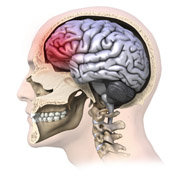Research and Innovation, UNL Office of

Center for Brain, Biology, and Behavior: Faculty Publications
Document Type
Article
Date of this Version
8-23-2022
Citation
The Cerebellum https://doi.org/10.1007/s12311-022-01459-4
Abstract
The cerebellum’s role in affective processing is increasingly recognized in the literature, but remains poorly understood, despite abundant clinical evidence for affective disruptions following cerebellar damage. To improve the characterization of emotion processing and investigate how attention allocation impacts this processing, we conducted a meta-analysis on task activation foci using GingerALE software. Eighty human neuroimaging studies of emotion including 2761 participants identified through Web of Science and ProQuest databases were analyzed collectively and then divided into two categories based on the focus of attention during the task: explicit or implicit emotion processing. The results examining the explicit emotion tasks identified clusters within the posterior cerebellar hemispheres (bilateral lobule VI/Crus I/II), the vermis, and left lobule V/VI that were likely to be activated across studies, while implicit tasks activated clusters including bilateral lobules VI/Crus I/II, right Crus II/lobule VIII, anterior lobule VI, and lobules I-IV/V. A direct comparison between these categories revealed five overlapping clusters in right lobules VI/Crus I/Crus II and left lobules V/VI/Crus I of the cerebellum common to both the explicit and implicit task contrasts. There were also three clusters activated significantly more for explicit emotion tasks compared to implicit tasks (right lobule VI, left lobule VI/vermis), and one cluster activated more for implicit than explicit tasks (left lobule VI). These findings support previous studies indicating affective processing activates both the lateral hemispheric lobules and the vermis of the cerebellum. The common and distinct activation of posterior cerebellar regions by tasks with explicit and implicit attention demonstrates the supportive role of this structure in recognizing, appraising, and reacting to emotional stimuli.
Included in
Behavior and Behavior Mechanisms Commons, Nervous System Commons, Other Analytical, Diagnostic and Therapeutic Techniques and Equipment Commons, Other Neuroscience and Neurobiology Commons, Other Psychiatry and Psychology Commons, Rehabilitation and Therapy Commons, Sports Sciences Commons


Comments
© The Author(s) 2022